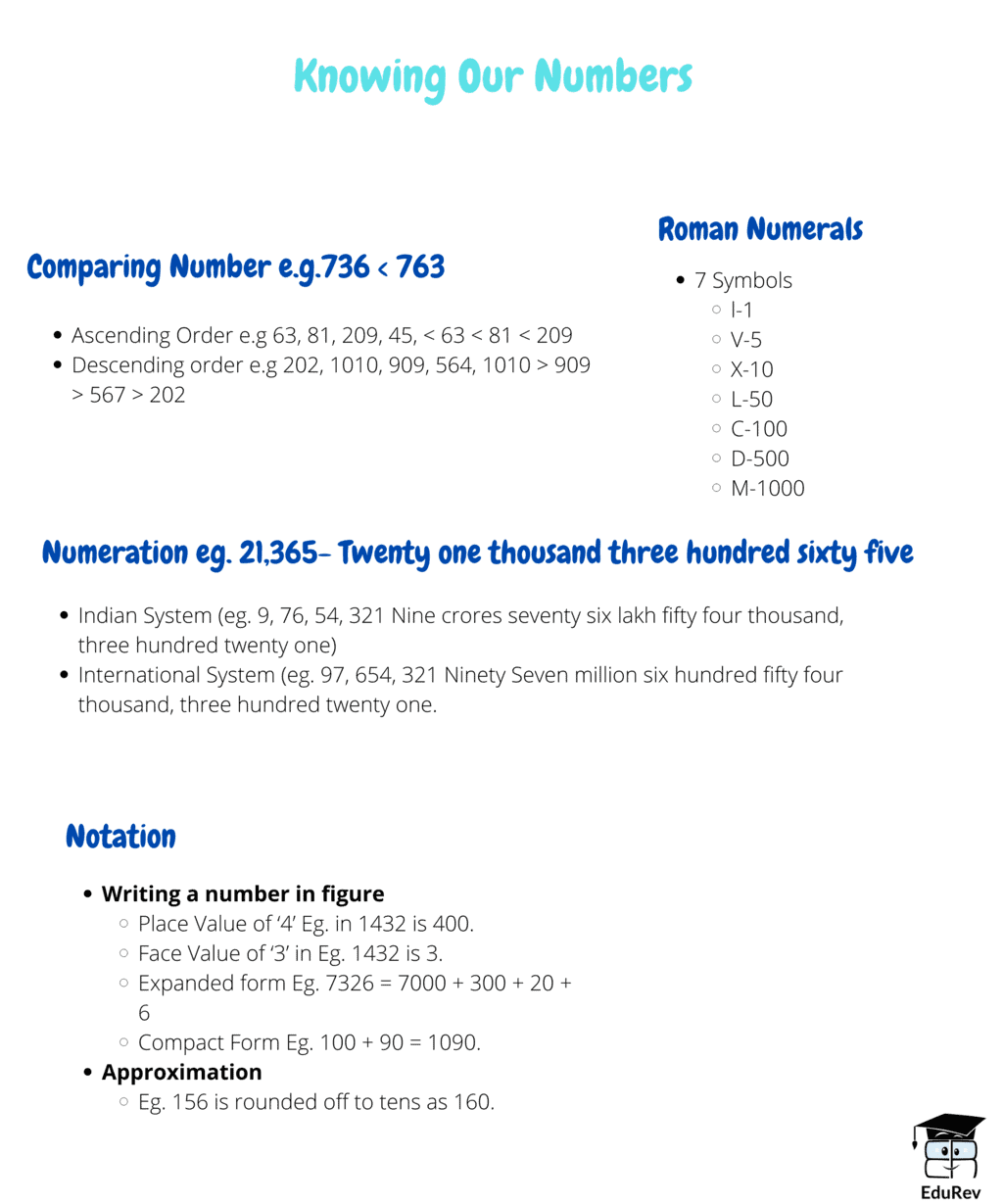Class 6 Exam > Class 6 Notes > Subject-Wise Mind Maps for Class 6 > Mind Map: Knowing Our Numbers
Mind Map: Knowing Our Numbers | Subject-Wise Mind Maps for Class 6 PDF Download

The document Mind Map: Knowing Our Numbers | Subject-Wise Mind Maps for Class 6 is a part of the Class 6 Course Subject-Wise Mind Maps for Class 6.
All you need of Class 6 at this link: Class 6
FAQs on Mind Map: Knowing Our Numbers - Subject-Wise Mind Maps for Class 6
| 1. What is the importance of understanding numbers in our daily life? |  |
Ans. Understanding numbers is essential in our daily life as it helps us in various tasks such as counting money, telling time, measuring ingredients while cooking, and keeping track of scores in sports. It also enables us to analyze data, make informed decisions, and solve problems efficiently.
| 2. How can we differentiate between odd and even numbers? |  |
Ans. To differentiate between odd and even numbers, we need to check the units digit. If the units digit is 0, 2, 4, 6, or 8, then the number is even. If the units digit is 1, 3, 5, 7, or 9, then the number is odd. For example, 24 is even because the units digit is 4, while 37 is odd because the units digit is 7.
| 3. How can we find the place value of a digit in a number? |  |
Ans. To find the place value of a digit in a number, we need to determine the position of the digit in the number. The rightmost digit represents the ones place, the digit to the left of it represents the tens place, the digit to the left of the tens place represents the hundreds place, and so on. For example, in the number 547, the place value of 4 is tens, the place value of 5 is hundreds, and the place value of 7 is ones.
| 4. How can we compare two numbers using the greater than and less than symbols? |  |
Ans. To compare two numbers using the greater than and less than symbols, we need to compare their values. The greater than symbol (>) is used to indicate that one number is larger than the other, while the less than symbol (<) is used to indicate that one number is smaller than the other. For example, if we compare 25 and 37, we can say 37 > 25, which means 37 is greater than 25.
| 5. How can we represent numbers on a number line? |  |
Ans. To represent numbers on a number line, we need to mark the given numbers at appropriate intervals. The number line starts with 0 and extends in both positive and negative directions. We place smaller numbers to the left of 0 and larger numbers to the right of 0. For example, if we want to represent the numbers -3, 0, and 5 on a number line, we place -3 to the left of 0, 0 at the center, and 5 to the right of 0.
Related Searches

















